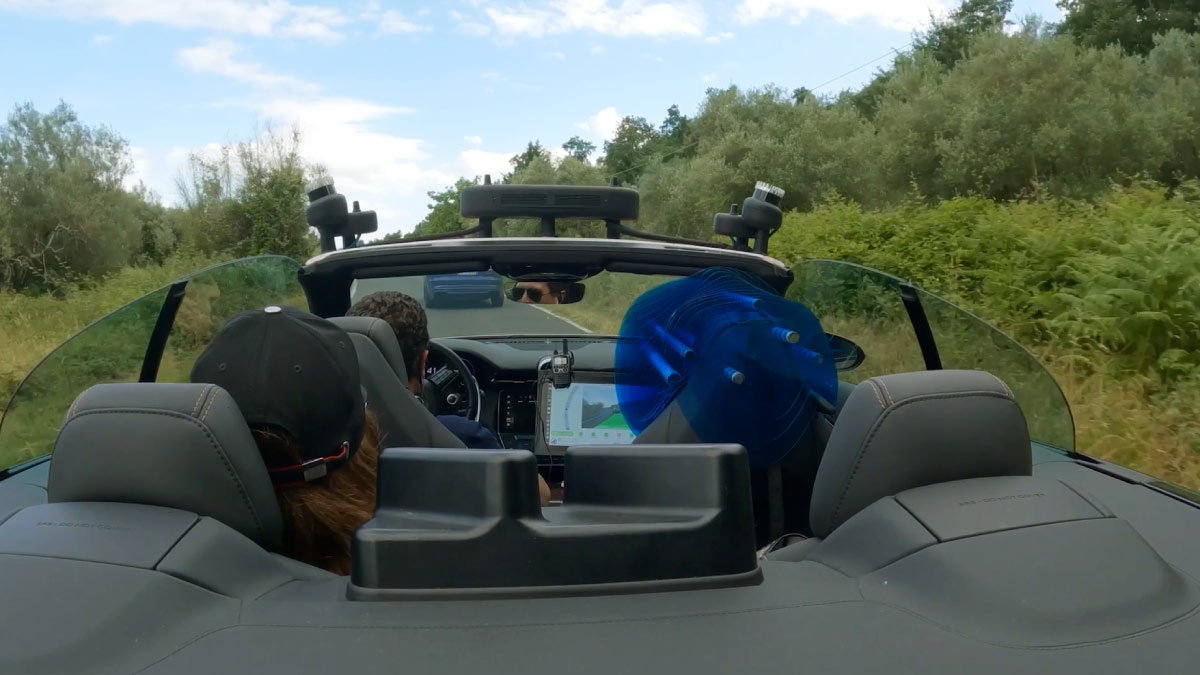The way we see the world could change forever thanks to a series of network innovations going mainstream in 2022, according to experts.
5G and Wi-Fi 6 networks boasting massive bandwidth and low latency will soon augment our view of the universe with real time, personalized data relayed onto smart glasses, says Matthew MacPherson, wireless chief technology officer at Cisco.
“Wearing these glasses, I’d walk up to you and the network would remind me of your name, the last time we got together, and what we talked about,” MacPherson says. “All these services become available without you having to request them.”
The idea of superimposing live data feeds onto a person’s view is not a new concept. Robots did it in the Terminator movie franchise and, in real life, fighter pilots get live data through the head-up displays (HUDs) used in air force jets. But getting this technology into consumer hands has been tricky.
HUDs create what is known as mixed reality, a mashup of real and digital experiences. According to Microsoft, mixed reality covers a spectrum of experiences from completely physical to fully digital worlds.
At the digital end you have virtual reality, offering the kind of immersion familiar to online gamers. Virtual reality has progressed in leaps and bounds because users typically rely on headsets that are linked to a computer which takes care of rendering and other data processing functions.
And in a virtual reality scene the computer does not need to worry about real-world objects and their relation to the viewer. But when you try to add digital inputs to a view of the real world, a concept often referred to as augmented reality, you run into problems.
Take a walk in the park: in a fully immersive mixed reality experience, your smart glasses would need to continuously scan the landscape, analyze what you see and return data personalized to your interests—telling you what kind of tree you are walking past if you are a plant lover, for instance.
Things get even more complex if you want to include virtual objects that are designed to stay in a fixed point in space. When you shift your gaze, the immersive system must be able to track your movement and re-render to position of the virtual object accordingly, in real time.
This requires a large amount of ultra-fast computing capacity. To avoid permanently tethering users to bulky computers, early immersive systems attempted to pack all this computing power into the smart glass device.
But the weight of the GPU-integrated headsets made the smart glasses uncomfortably heavy to wear. And the processing used a lot of energy, so the glasses would heat up and run out of battery power in a short span of time.
It seemed like fully immersive augmented reality was doomed to remain in the realm of science fiction. But now, 5G and Wi-Fi 6 have changed the picture completely.
5G mobile networks offer peak speeds 10 times faster or more than their 4G predecessors, along with four to five times less latency. As of November 2021, 7 percent of the world’s population had access to 5G.
That figure is expected to grow to 25 percent by 2025, according to the industry body GSMA. Meanwhile, almost a quarter of new wireless access points shipped in Q2 last year were Wi-Fi 6 products, according to analyst firm IDC.
The potential of Wi-Fi 6 has improved even more with a new variant called Wi-Fi 6E, which has access to 1200 more Mhz of spectrum (which more than doubles what was previously available), providing the ability to create a fast lane for bandwidth-hungry, low-latency applications.
Together, these network technologies promise to offer enough wireless bandwidth and low latency for augmented reality applications to run in the cloud, freeing smart glasses from having to carry heavy, power-intensive graphic processing .
And they are technologies that are entering mainstream use today, which is why MacPherson believes 2022 could be the year that full immersion starts its ramp. “This is not in the realm of science fiction anymore,” he says. “It is very doable.”
Companies such as the tech giant Microsoft and the graphics processing unit maker Nvidia are making “huge investments” in this space, he says, which could contribute to mainstream adoption faster than you think. The implications are staggering.
Imagine, for example, driving through a built-up area and being able to see digital renderings of cars approaching from side streets, even when there are buildings in the way.
Or picture a surgery lesson where students not only get a view the operating theater but can change that view to any perspective they want—and see digital images of organs hidden beneath the patient’s skin.
With full immersion, these superhuman skills will be within reach of anyone who can afford a cost effective pair of smart glasses. Naturally the capabilities immersion could bring suggest lawmakers will have to grapple with a host of regulatory and privacy related issues.
And they will need to do so soon because the lure of immersion is immense. MacPherson, a keen fisherman, can already picture a day when he looks out across the lake near his country home—and his smart glasses indicate the water level and temperature, along with the fishing season dates.
From the mind-blowing to the mundane, “this opens up a whole new world of possibilities,” he says.
###




